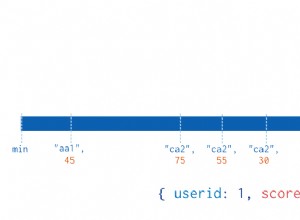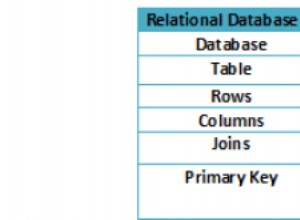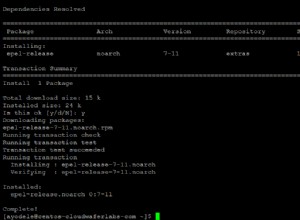Per utilizzare IMemeberMapConvention, devi assicurarti di dichiarare le tue convenzioni prima che abbia luogo il processo di mappatura. Oppure, facoltativamente, elimina le mappature esistenti e creane di nuove.
Ad esempio, il seguente è l'ordine corretto per applicare una convenzione:
// first: create the conventions
var myConventions = new ConventionPack();
myConventions.Add(new FooConvention());
ConventionRegistry.Register(
"My Custom Conventions",
myConventions,
t => true);
// only then apply the mapping
BsonClassMap.RegisterClassMap<Foo>(cm =>
{
cm.AutoMap();
});
// finally save
collection.RemoveAll();
collection.InsertBatch(new Foo[]
{
new Foo() {Text = "Hello world!"},
new Foo() {Text = "Hello world!"},
new Foo() {Text = "Hello world!"},
});
Ecco come è stata definita questa convenzione di esempio:
public class FooConvention : IMemberMapConvention
private string _name = "FooConvention";
#region Implementation of IConvention
public string Name
{
get { return _name; }
private set { _name = value; }
}
public void Apply(BsonMemberMap memberMap)
{
if (memberMap.MemberName == "Text")
{
memberMap.SetElementName("NotText");
}
}
#endregion
}
Questi sono i risultati che sono emersi quando ho eseguito questo campione. Potresti vedere che la proprietà Text è stata salvata come "NotText":





